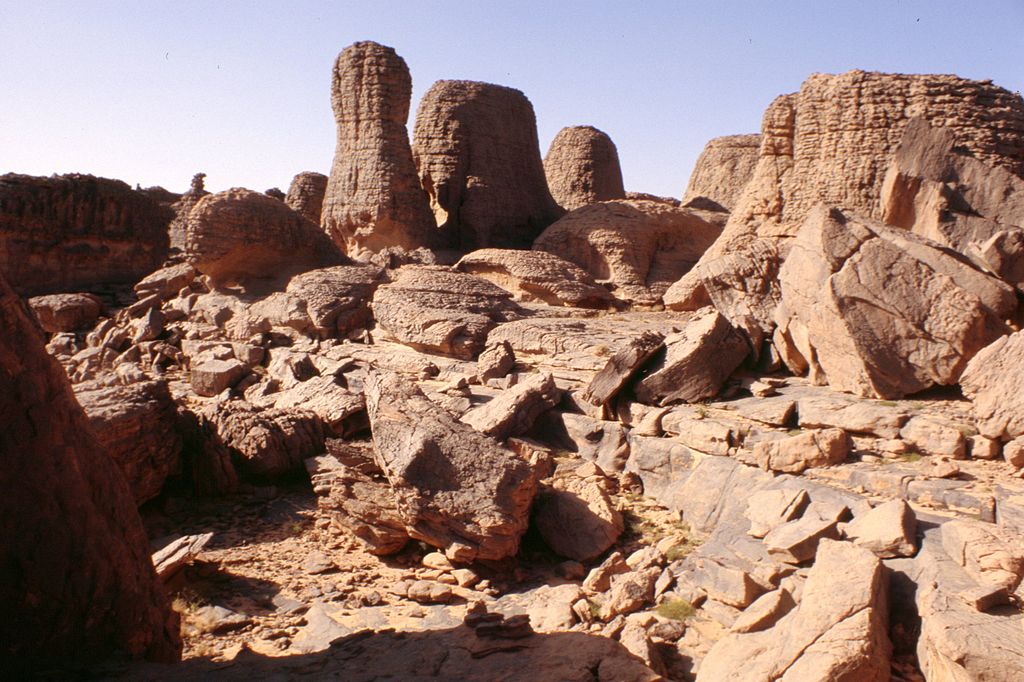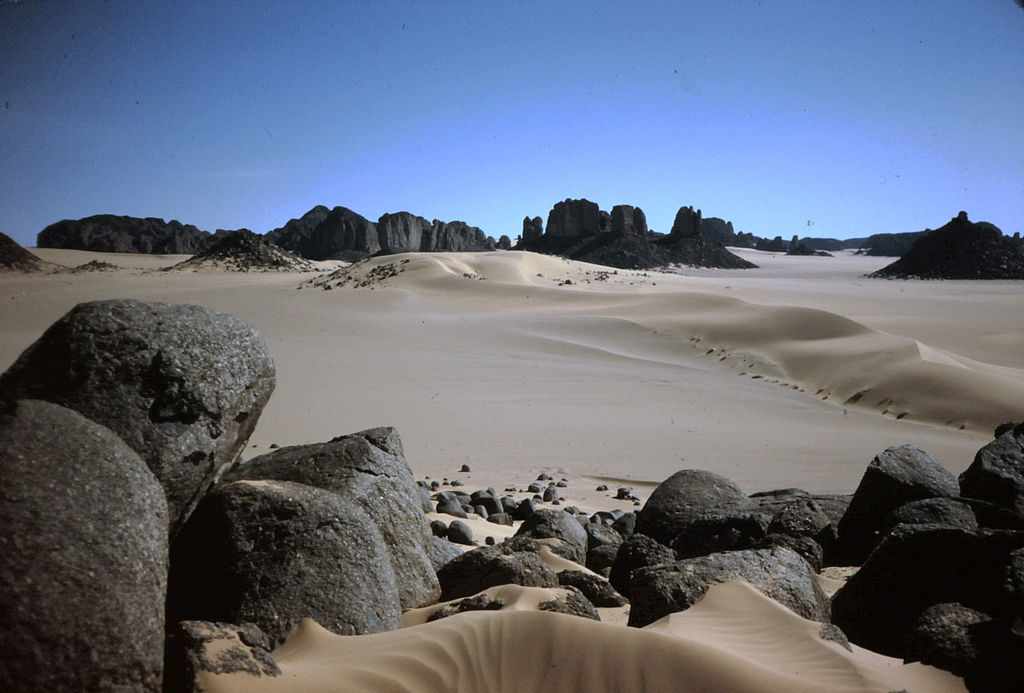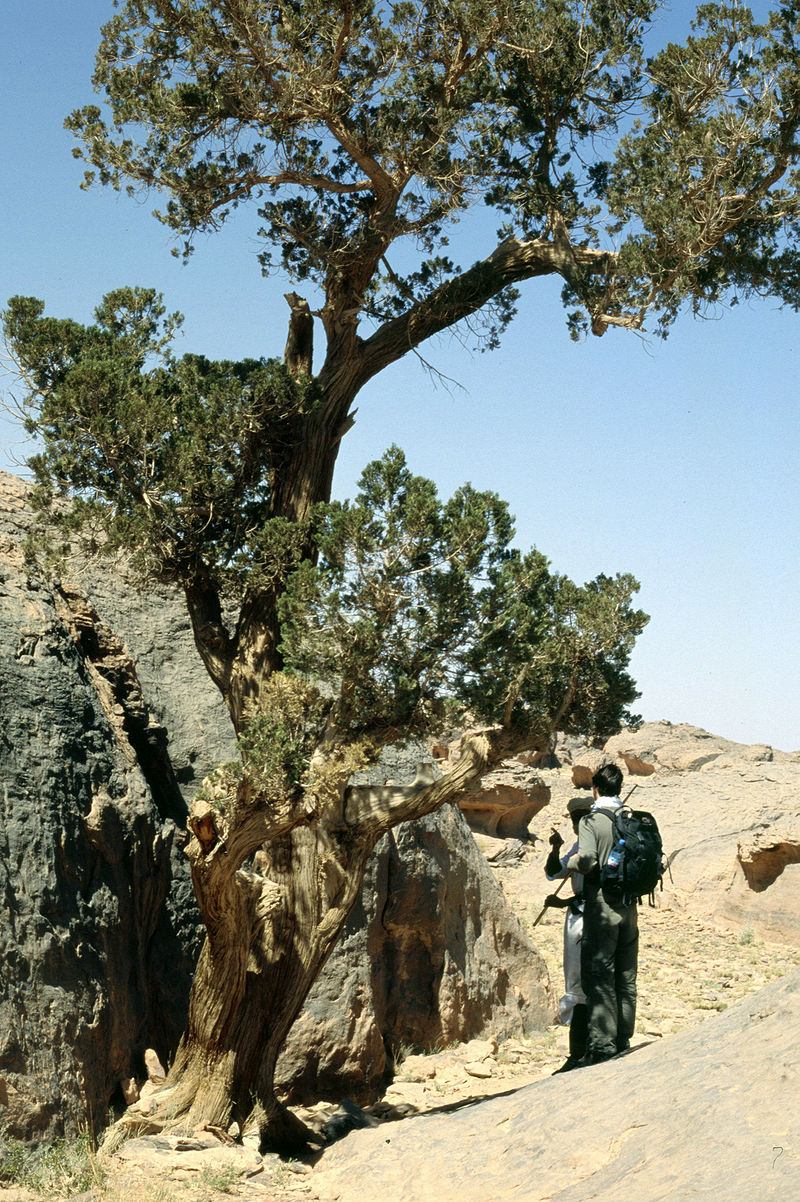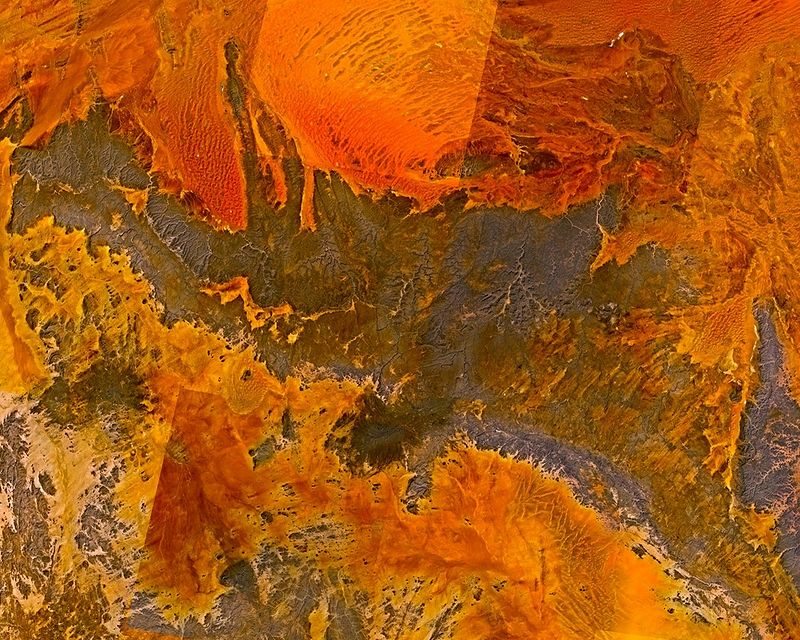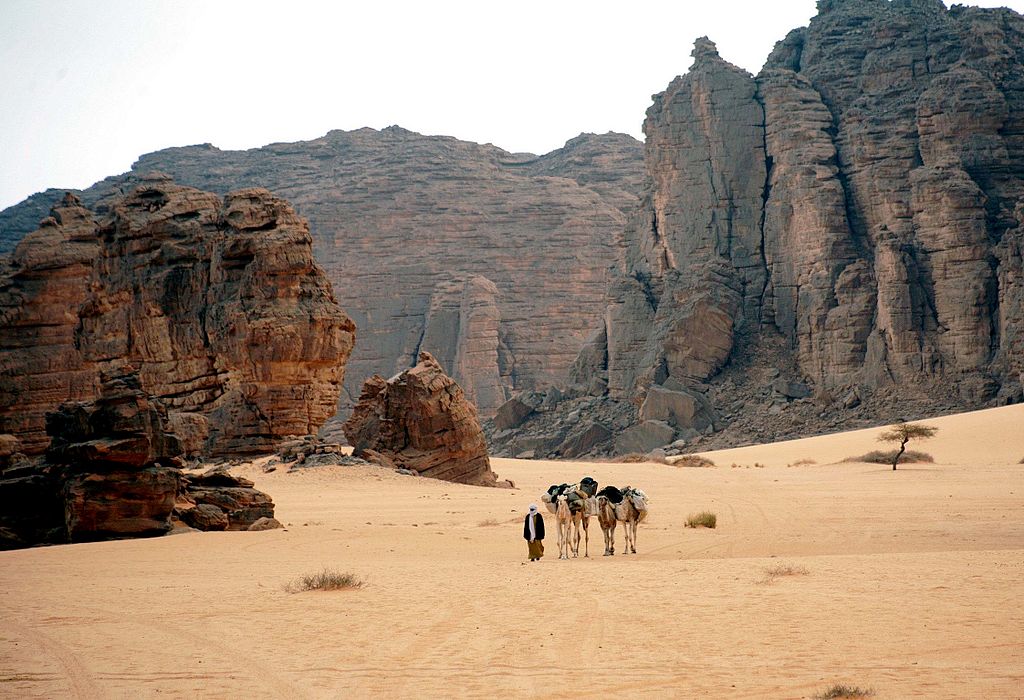Tassili n'Ajjer is a mountain range in the Algerian section of the Sahara Desert. It is a vast plateau in south-east Algeria at the borders of Libya and Niger, covering an area of 72,000 km2.
The range is also noted for its prehistoric rock art and other ancient archaeological sites, dating from the Neolithic era when the local climate was less dry, savannah rather than desert. The art is no older than 9–10 millennia, according to OSL dating of associated sediments, but may be younger. The art depicts herds of cattle, large wild animals including crocodiles, and human activities such as hunting and dancing. According to UNESCO, "The exceptional density of paintings and engravings...have made Tassili world famous as from 1933, the date of its discovery. 15,000 engravings have been identified to date."
The Tassili n'Ajjer range extends from 26°20′N 5°00′E east-south-east to 24°00′N 10°00′E, and the highest point is Adrar Afao, 2158 m, at 25°10′N 8°11′E. The nearest town is Djanet, about 10 km southwest of the range. Much of the range, including the cypresses and archaeological sites (see below), is protected in a National park, Biosphere Reserve and World Heritage Site, named the Tassili n'Ajjer National Park.
The plateau is also of great geological and aesthetic interest: the panorama of geological formations with "rock forests" of eroded sandstone resembles a strange lunar landscape.
The range is composed largely of sandstone. Erosion in the area has resulted in nearly 300 natural rock arches being formed, along with many other spectacular landforms.
Because of the altitude and the water-holding properties of the sandstone, the vegetation here is somewhat richer than in the surrounding desert; it includes a very scattered woodland of the endangered endemic species Saharan Cypress and Saharan Myrtle in the higher eastern half of the range.
The ecology of the Tassili n'Ajjer is more fully described in the article West Saharan montane xeric woodlands, the ecoregion to which this area belongs. The literal English translation of Tassili n'Ajjer is 'Plateau of the rivers' referring to a time when the climate was repeatedly far wetter than it is today (see Neolithic Subpluvial).




